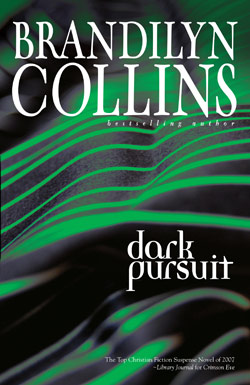The key is to focus
on the emotion of the scene...
Last month we talked about
designing a resolution for a novel that is character-driven, not
fact-driven. A scene that gives the readers a satisfying look at the
character’s life after all the action is over. I noted that in this
type of resolution it’s very hard to weave in all the facts that still
need to be explained in a natural way. So how to do that?
On the personal side, I try to
bring as many characters into the scene as possible. Either they are
physically present, or there’s a phone call, or the main character is
thinking of a recent conversation with that person, or all of the
above. A lot of the characters will have personal details hanging that
I will want to address in some way. I may resolve the issue, or if it’s
a series I may even insert a new question (say, a romantic one) that
will carry the reader into the next book.
The harder issue for me is
weaving all the necessary explanations of what really happened in the
crimes that the whole book is based upon. Because I’ve spent 98% of the
book laying false assumptions for my readers in order that the story
can include twists, in the resolution I have to untangle all of those.
I have to show—without connecting every dot—what
really happened. I also have to tie up the loose ends, letting the
reader know what has happened between the climax and the resolution
scene. The key is to focus on the emotion of the scene, figuring out
how to slip information in as the characters deal with their issues.
The dozens of pieces of information can be inserted in these ways:
1. Action.
The main character can be confronting someone, returning home, dealing
emotionally with the fallout of the trauma, receiving a package,
reading a newspaper, talking on the phone, convalescing in the
hospital, attending a final court hearing—the choices are endless. I
ask myself: What action will provide the best framework in which to
insert the necessary information?
2. Conversation.
The trick here is that it has to be natural. The characters need to
really be talking to each other rather than the author talking to the
reader. The best dialogue slips in information a bit at a time. Good
dialogue also skips over the details and makes a statement that sums up
the basics of what happened, allowing the reader to fill in the logical
blanks. For example, here’s an unwieldy piece of dialogue that tries to
impart too many details:
“I’m just glad the
trial ended last week, and he was convicted. Now he’s been sentenced to
life without parole. Still, it’s not enough!”
Here’s a better way, pumping up
the emotion while slipping in the main info:
“Life without parole.”
She aimed a bitter look out the window. “It’s too good for him.”
The facts that the trial is over
and he was convicted are made obvious in those first three words.
|
3. Narrative.
It’s really easy to do too much of this, so when I use it, I write very
tightly, making every word count, and again, not detailing more
information than I have to. The narrative is in the form of the
point-of-view character’s thoughts. I break up these passages, moving
from action to conversation to a bit of narrative, back to
conversation. I structure the conversation into beats that will lead
naturally to the character thinking about some aspect of the story that
needs to be resolved. For example, let’s say the above bit of dialogue
was spoken to the point-of-view character. And one of the unresolved
pieces of information is the number of crimes for which the guy was
convicted. The point-of-view character then might respond:
“Yes, it is.”
She sank into a chair, sick at heart and feeling more frail than ever.
If only they could have proved the second murder. He’d have gotten
death. And death was what he deserved.
Sometimes to impart a lot of
information I’ve structured a portion of the scene around a TV show
about the case, or around characters reading a newspaper article. These
techniques can work—again, as long as the scene focuses on the characters
and their interaction and emotions, not the show or article
itself.
Of course, some pieces of
information can be effectively worked into the crisis/climax. An
obvious one is the answer to who-dun-it. And in the
midst of the action, I can sometimes weave in a few bits of dialogue
that will show the bad guy’s motivation behind the crime, or will show
how he accomplished some bit of legerdemain. But the action can’t be
slowed to do this! I will only weave in what’s natural and save the
rest for the resolution.
In my suspense novels I find the
resolution the hardest scene (or scenes) to write. Not only because of
all the resolution must accomplish in tying up loose ends, but I’m also
aware it’s my last word to the reader. I want to leave my readers with
satisfying thoughts about the story and something to think about
regarding the human condition. After sticking with the entire novel,
this is what the reader expects and deserves, no matter the genre.

|